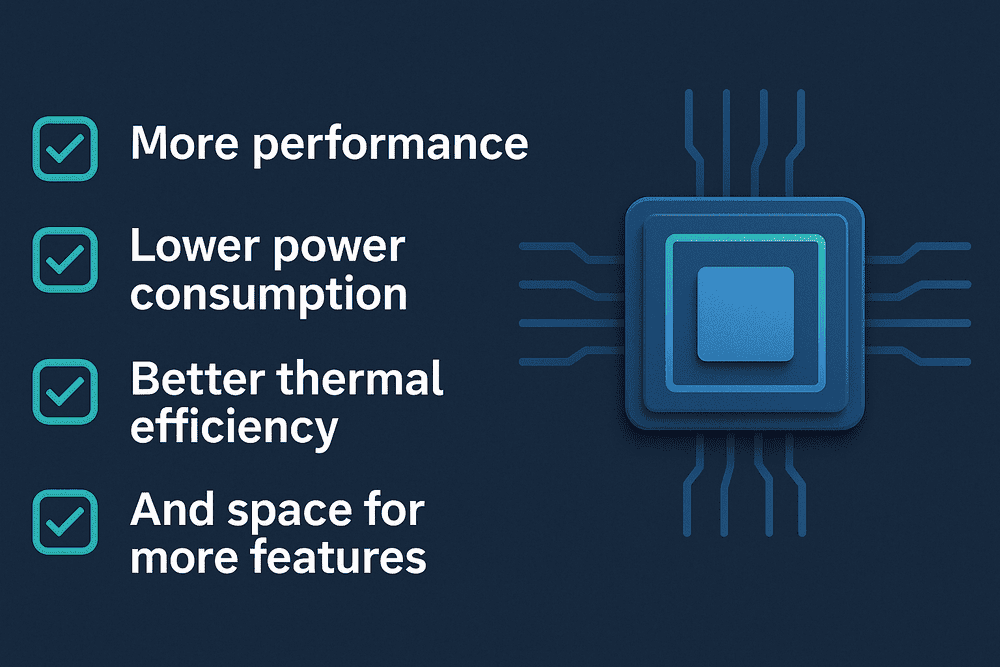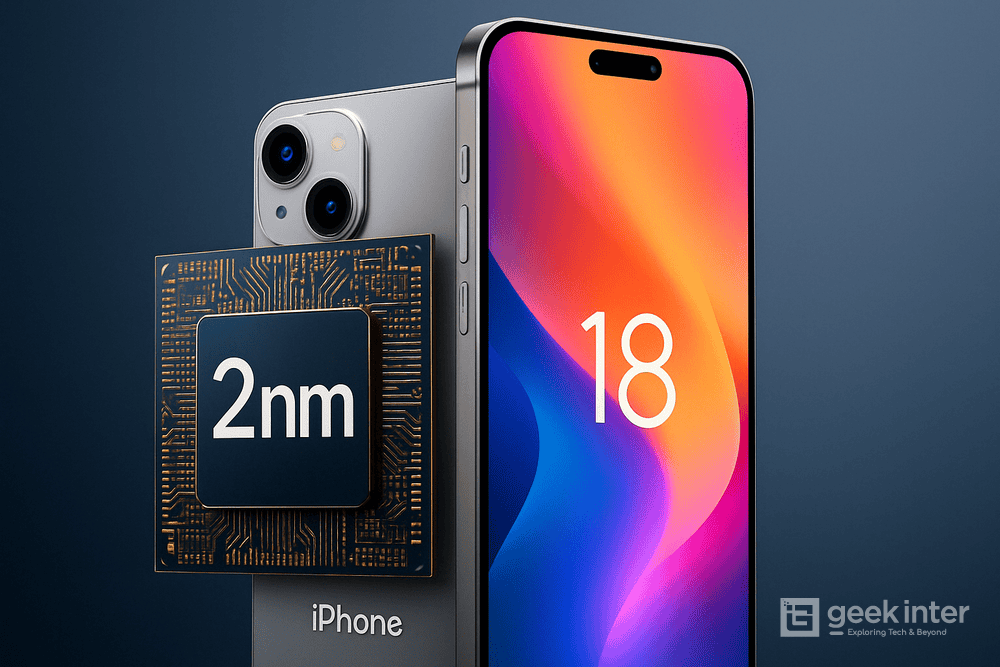The iPhone has never exactly been affordable, but Apple might be preparing to push its pricing further in 2025 — and not just because of tariffs or inflation. Instead, it’s about something Apple rarely compromises on: cutting-edge chip technology.
According to multiple leaks and supply chain analysts, the upcoming iPhone 18 lineup is expected to debut with TSMC’s ultra-advanced 2nm process, powering Apple’s next-gen A20 chip.
That’s right — while most smartphones today are still running on 4nm or even 5nm nodes, Apple’s jumping straight into 2nm territory.
What’s So Special About 2nm?

In chip design, “nm” (nanometers) refers to the manufacturing process and the size of transistors. The smaller the number, the more transistors can fit on a chip — which generally means:
- ✅ More performance
- ✅ Lower power consumption
- ✅ Better thermal efficiency
- ✅ And space for more features
Going from 3nm (used in the current A17 Pro) to 2nm isn’t just another tick-tock upgrade — it’s a major leap. Think faster AI performance, longer battery life, and even more sophisticated machine learning tasks handled locally on the device.
The Catch? It’s Going to Cost More
TSMC’s 2nm production won’t come cheap. The chipmaker is building two new fabs specifically for the 2nm node and may add a third, with mass production slated to begin by late 2025. Apple, as TSMC’s lead customer, is expected to be first in line — and first to absorb the costs.
“Apple doesn’t typically pass down costs without justification,” notes supply chain insider Digital Chat Station.
“But in this case, the jump to 2nm is both unavoidable and expensive.”
In other words: the iPhone 18 will likely cost more, and Apple’s betting that you’ll be okay with that — because the tech behind it is that compelling.
Meanwhile, Tariffs Loom in the U.S.
There’s another pressure point: U.S. trade policy.
Former President Donald Trump, running again in 2024, has signaled a more aggressive stance on tariffs — particularly targeting semiconductor-heavy imports from China and other regions. Apple is currently enjoying temporary tariff exemptions on some of its products, but those may expire soon.
“No one is getting tax exemptions,” Trump said this week. “There will be no exceptions.”
This could raise the price of not just iPhones, but Macs and other Apple gear — especially if supply chains remain China-dependent.
So What’s Coming in iPhone 18?
While the iPhone 17 lineup will debut later this year — with models like the iPhone 17 Pro Max and a rumored ultra-thin iPhone 17 Air — all eyes are already on the 2025 iPhone 18 lineup, which may include:
- A20 chip built on TSMC’s 2nm process
- Significant gains in GPU/CPU/Neural Engine efficiency
- Potentially revamped camera layout (rumored redesign)
- Battery life gains due to lower power draw
- Price bumps to offset chip costs and potential tariffs
This isn’t just an upgrade — it’s Apple laying the groundwork for the next generation of on-device AI.
The Real Reason Behind the Upgrade: AI
Apple has been quietly preparing for an AI future — and the A20 chip might be the first one built specifically with generative and personalized AI in mind.
Imagine:
- On-device ChatGPT-like functionality
- Smarter Siri with less cloud reliance
- Real-time language translation, transcription, and summarization
- Pro-level photo and video editing, live on your phone
To support these features, Apple needs more powerful silicon with better energy efficiency — which is exactly what 2nm enables.
GeekInter’s Take
While price hikes are never fun, Apple’s move to adopt 2nm could be the most meaningful performance jump we’ve seen since the M1 chip on Mac.
For power users, content creators, and anyone eyeing long-term device performance, this may justify the cost. But for everyday users who just want the basics? The iPhone 17 or even the iPhone 16 might remain the smarter buy.
Either way, Apple is clearly betting that you’re willing to pay more — not just for status, but for real, tangible tech advancements.
Stay tuned: the chip war is just heating up.











